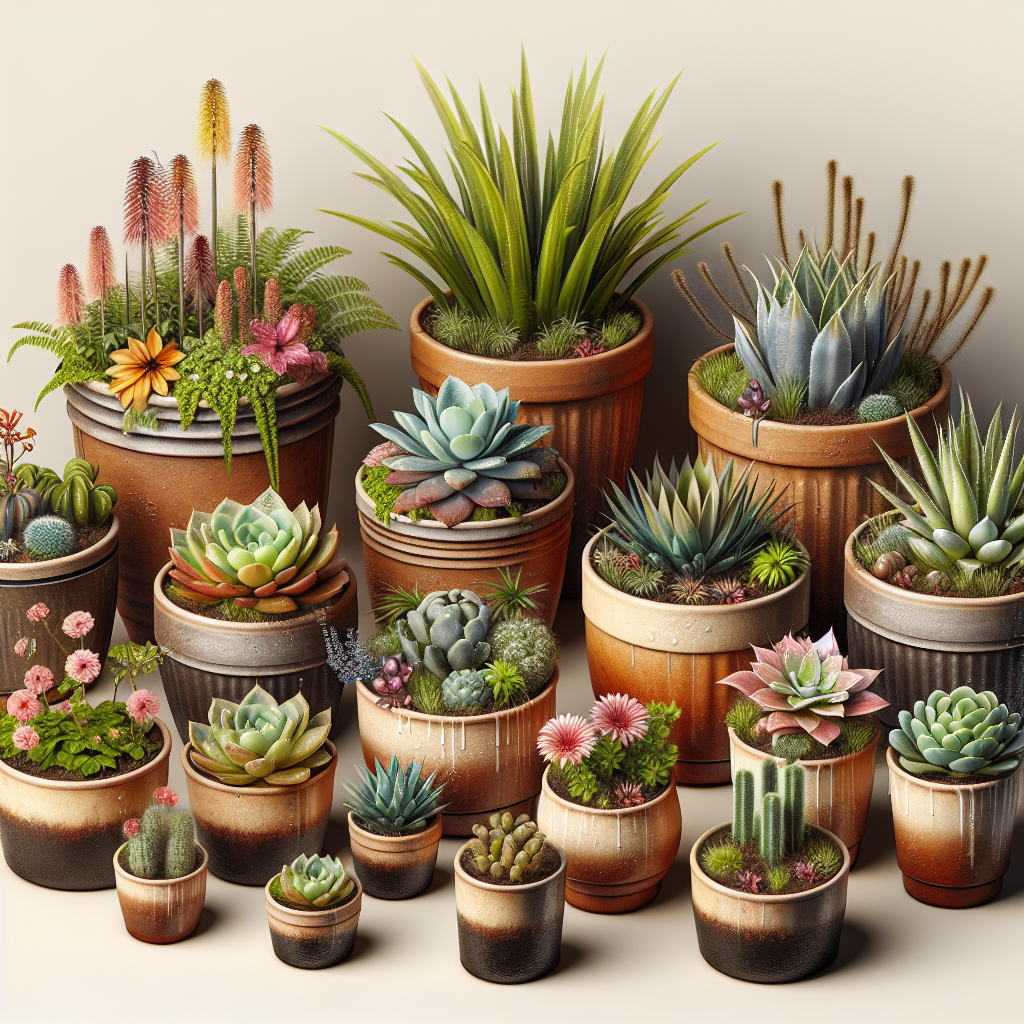Container gardening is a popular way to bring the beauty of plants into small spaces, whether it be a balcony, patio, or windowsill. However, one common challenge that container gardeners face is how to properly water their plants. Different types of container plants have varying water requirements, and it can be tricky to find the right balance for each one. In this article, we will explore the key factors to consider when watering different container plants and offer practical tips on how to achieve optimal hydration for your green friends.
Watering container plants may seem like a simple task, but it requires careful attention to detail in order to keep your plants healthy and thriving. Factors such as plant species, pot size, soil type, and environmental conditions all play a role in determining how much and how often you should water your container plants. By understanding these factors and implementing proper watering techniques, you can ensure that your plants receive the perfect amount of moisture they need to flourish. Let’s delve into the art of balancing water requirements among different container plants.
**Choosing the Right Container**
The type of container you choose can have a significant impact on the watering needs of your plant. Clay pots are porous and allow moisture to evaporate more quickly than plastic or metal containers. This means that plants in clay pots may need to be watered more frequently than those in other types of containers. On the other hand, plastic containers retain moisture better and may require less frequent watering.
When selecting a container for your plant, consider the size as well. Larger pots hold more soil and therefore retain more moisture than smaller pots. However, larger pots also tend to dry out more slowly than smaller pots because they have a greater soil volume.
**Understanding Plant Species**
Different plant species have different water requirements based on their natural habitat and growth habits. Succulents like cacti and sedums require infrequent watering due to their ability to store water in their leaves and stems. Overwatering succulents can lead to root rot and other issues.
On the other hand, tropical plants like ferns and orchids thrive in humid environments and may need more frequent watering than desert-loving succulents. Research the specific needs of each plant species in your container garden to determine how often they should be watered.
**Soil Type Matters**
The type of soil you use in your containers can also affect how often you need to water your plants. Well-draining soil mixes are crucial for preventing root rot and other moisture-related issues in container plants.
A good potting mix should be light, loose, and well-aerated while retaining enough moisture for the roots to absorb. Avoid heavy soils that compact easily or hold onto excess moisture as they can suffocate roots or lead to overwatering problems.
**Environmental Factors**
Environmental conditions such as sunlight exposure, temperature, humidity levels, and air circulation can all influence how quickly soil dries out in container gardens. Plants placed in direct sunlight or exposed to high temperatures may lose moisture more rapidly than those kept in shaded or cooler areas.
During hot summer months or dry winter seasons, you may need to increase the frequency of watering sessions for your container plants. Conversely, during periods of high humidity or rainfall, you may need to adjust your watering schedule accordingly.
**Practical Watering Tips**
Now that you understand the key factors that influence watering needs among different container plants let’s explore some practical tips on how to effectively water them:
1. **Check Soil Moisture**: Before watering your plants, always check the soil moisture level by inserting your finger into the soil up to an inch deep. If it feels dry at this depth, it’s time to water; if it’s still moist or wet, wait a few days before checking again.
2. **Water Thoroughly**: When watering your containers focus on saturating the entire root ball thoroughly rather than giving a light sprinkle across the topsoil surface.
3. **Avoid Overwatering**: Overwatering is one of the most common causes of plant failure in containers due not only rots but also invites diseases.
4 .**Use Mulch**: Applying mulch on top of the soil surface helps retain moisture by reducing evaporation rates—mulch types include straw leaves wood chips among others.
5 .**Consider Self-Watering Systems**: Self-watering systems can help maintain consistent soil moisture levels by providing a reservoir for roots with access when needed.
6 .**Monitor Drainage**: Make sure that excess water drains freely from drainage holes at each watering session—standing water at roots causes rot.
By following these tips along with understanding individual plant needs and environmental factors—you’ll create an ideal balance between irrigation requirements among various types of container gardens ensuring optimal growth health for all contained within!
**FAQs About Balancing Water Requirements Among Different Container Plants:**
1 . **How often should I water my succulents?**
Succulents prefer infrequent but deep watering sessions since prolonged periods between
irrigation prevent over-soaking shallow root zones common with thick-stemmed varieties
requiring minimal irrigation.
2 . **What is the best time of day to water my container plants?**
Early morning is ideal since this allows ample time before rising temperatures accelerate
evaporation while decreasing nighttime unnecessary risk fungal development associated with
evening dampness
3 . **How do I know if I’m overwatering my houseplants?**
Signs like yellowing leaves wilting dropping buds excessive foliage brittle stems or moldy
appearance indicate excessive hydration—ensure correct pot drainage next irrigation
session establish equilibrium
4 . **Can I use collected rainwater for my indoor potted pet-safe?**
Yes collected rainwater provides natural minerals free harmful chemicals present tap city
sources plus lower ph levels found beneficial sensitive chemicals metals chlorine fluoride
In conclusion balancing irrigation schedules maintaining proper hydration levels among diverse categories varying compartmental farms essential promoting optimal growth minimizing risk related complications resulting dehydration over-hydration practicing effective techniques helpful ensuring success ultimate wellbeing green friends within beautiful sanctuary!













